Reversing the Curse: 5 world champions who've shone in the rainbow jersey
Laughing in the face of the 'rainbow curse'
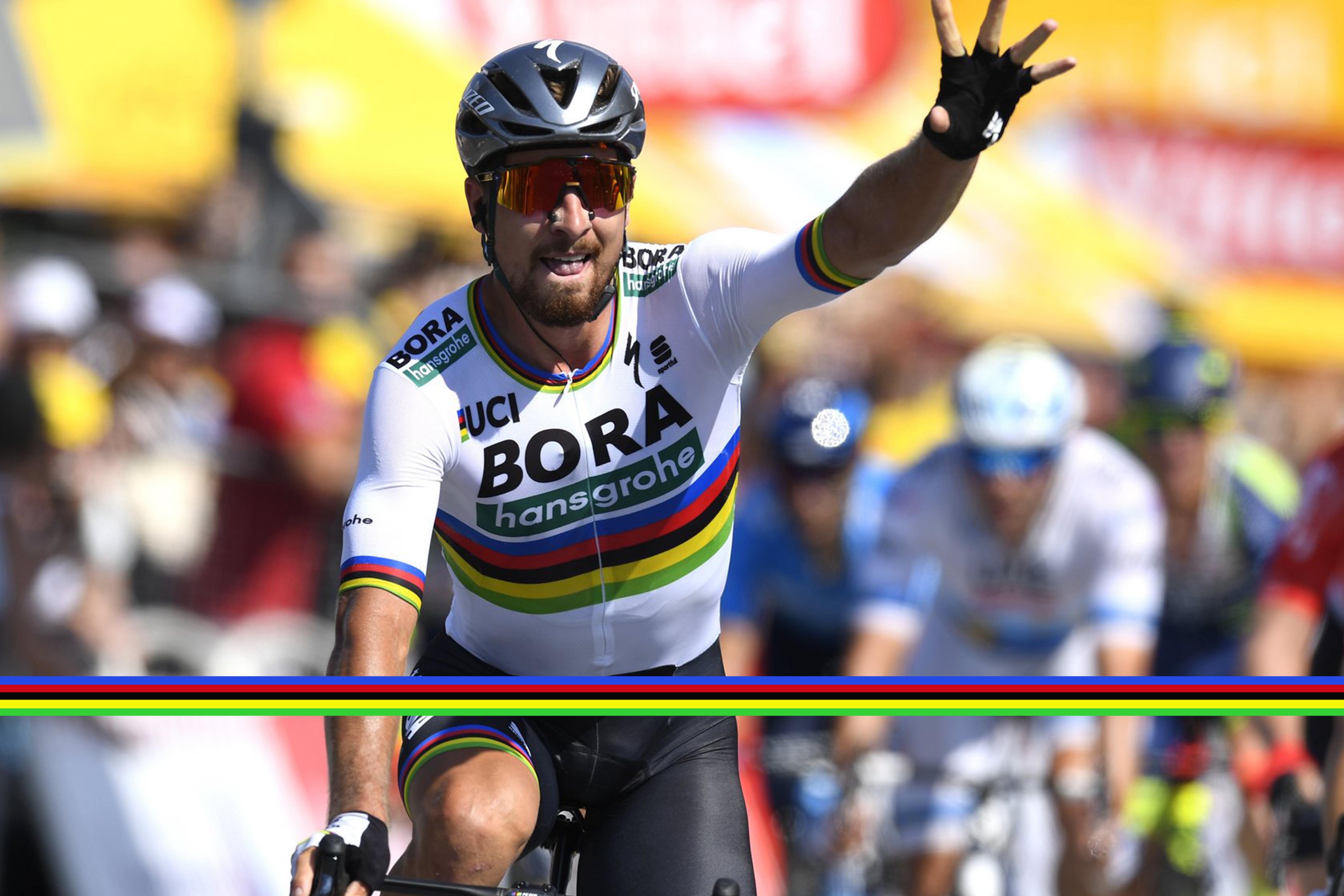
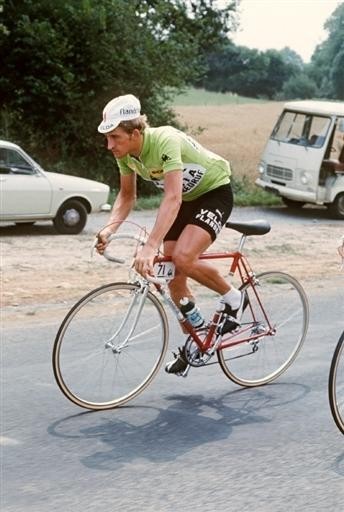
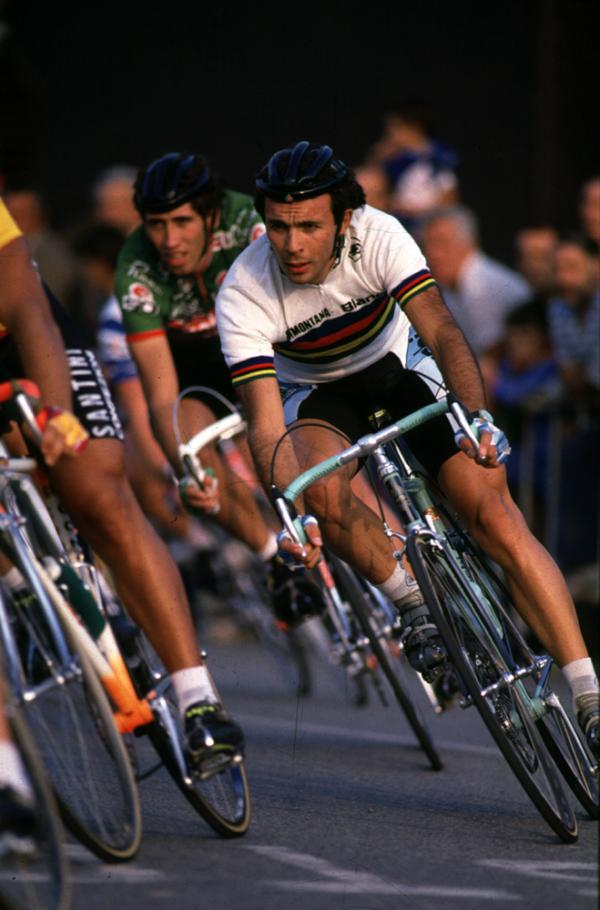
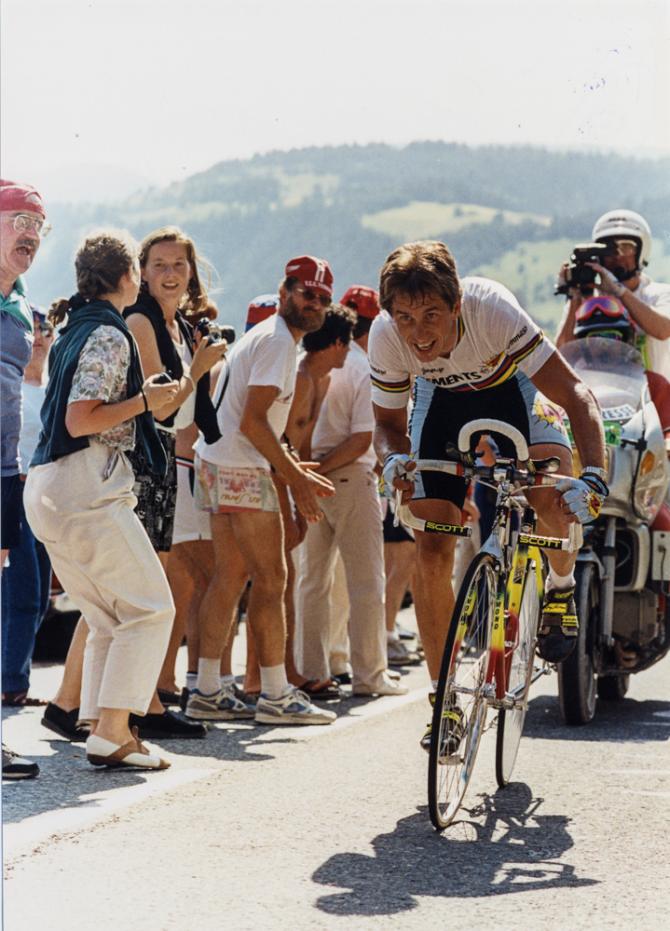
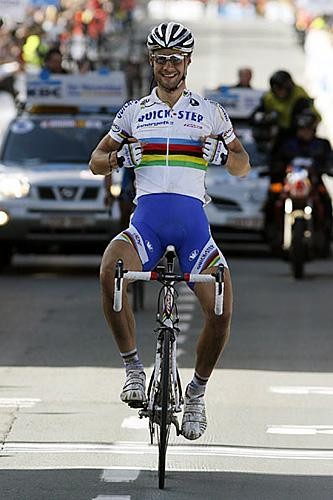
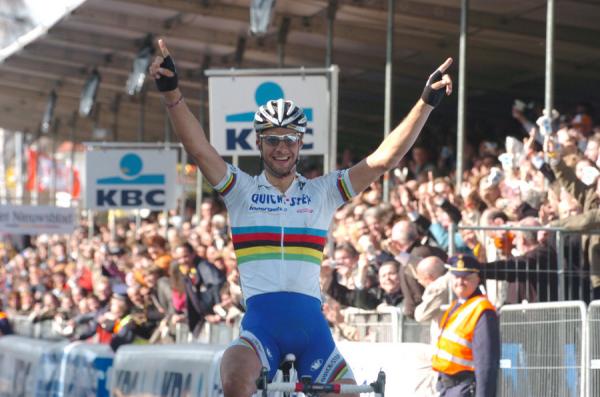
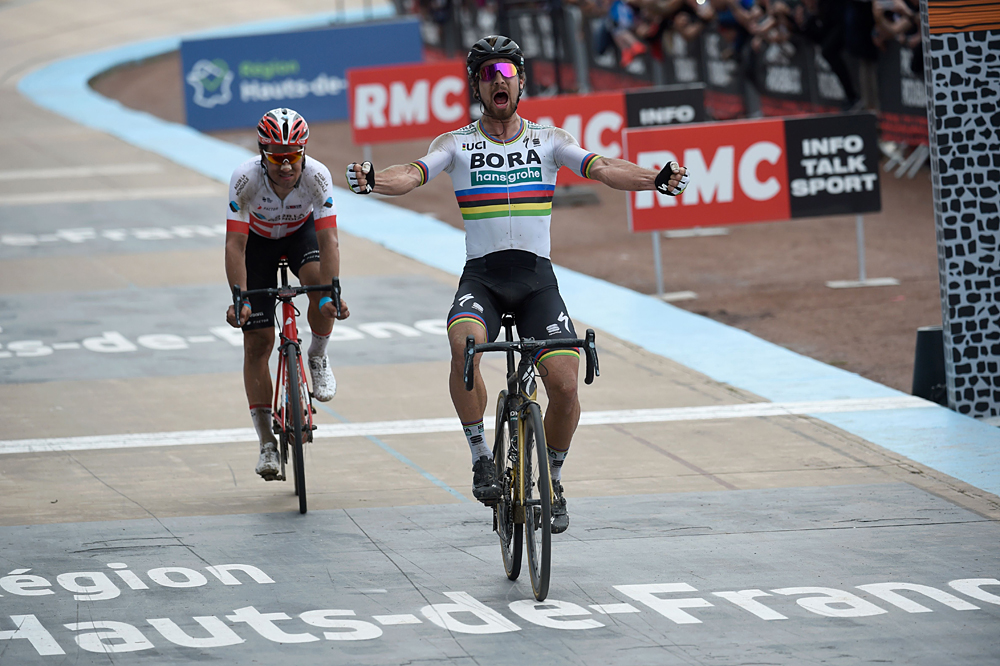
You've heard of the 'curse of the rainbow jersey' – the phenomenon whereby winners of cycling's Road Race World Championships go on to have awful injury- or illness-blighted, or indeed simply unsuccessful, seasons in their beautiful white jerseys with the rainbow bands.
Surely such bad luck can be explained away by the weight of expectation heaped upon such riders after taking the sport's ultimate one-day prize.
Or, as many believe, it's simply self-inflicted as a result of perhaps celebrating their new status as champion of the world just a little too much, or committing to one too many public appearances or media demands for interviews at a time when other riders are already knuckling down to training for the season to come.
Does the curse really exist, or can the rainbow jersey in fact bring you luck? Here are five examples of men's road race world champions who have gone on to have very successful seasons in the year after they won their rainbow jerseys.
1976 world champion Freddy Maertens' 1977 season
Freddy Maertens' Worlds road race win in Ostuni, Italy, in 1976, for which he'd started as the favourite, was the first of two world championship titles achieved by the Belgian, who won again in Prague, in the Czech Republic, in 1981.
But it was the 1976 title that paved the way to his vastly successful 1977 season in the rainbow jersey, while riding for the legendary Flandria team.
At the Vuelta a España, still held in April/May back then, Maertens raced to a frankly ridiculous 13 stage wins out of a possible 20, including the prologue time trial, and won the race overall, 2:51 ahead of Spain's Miguel María Lasa.
Get The Leadout Newsletter
The latest race content, interviews, features, reviews and expert buying guides, direct to your inbox!
Maertens then went on to win seven stages at the Giro d'Italia a month later – all in the first nine days, and again including the prologue time trial, which gave him the pink jersey.
However, while sprinting for the stage win at the Mugello motor circuit on stage 8b – the second of a 'split-stage' day, with Maertens already having won stage 8a that morning – he crashed and broke his wrist, and was forced to abandon the race. His Flandria teammate, Michel Pollentier, went on to take the overall title in Milan.
Besides his 1977 Vuelta win, Maertens was quite capable of winning week-long stage races, as he also demonstrated that season by winning the overall titles at Paris-Nice, the Tour of Sardinia and the Volta Ciclista a Catalunya.
While sprinting to stage wins at Grand Tours was his bread and butter – and it was mainly his sprint that gained him his victories – Maertens was, being Belgian, also a highly accomplished Classics rider, and won the Omloop Het Volk in 1977, and 1978, having already won Gent-Wevelgem twice before, the Amstel Gold Race in 1976, and Paris-Brussels and Paris-Tours in 1975, among other one-day races.
In 1977, Maertens also finished third at Paris-Roubaix and second at the Tour of Flanders, although, proving it didn't quite all go his way that season, he was disqualified from the latter for having illegally changed his bike on the climb of the Koppenberg.
His hugely successful 1977 season was in fact further blighted in that he was disqualified from Flèche Wallonne for testing positive for amphetamines, which was more a result of judgement – bad judgement on his part, in an era when such doping was nevertheless rife – than bad luck.
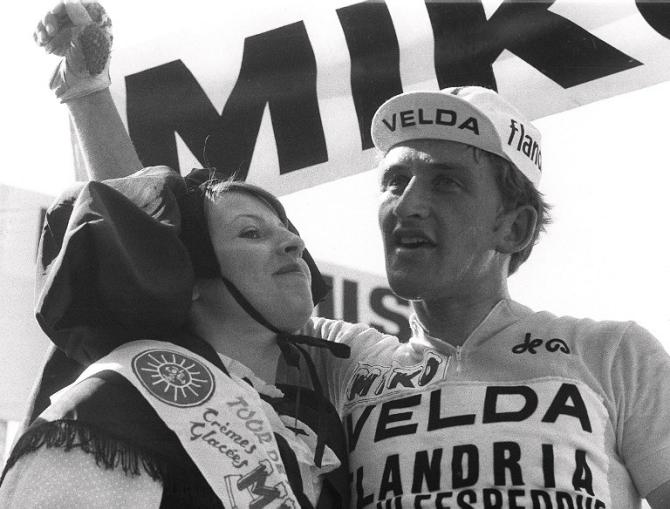
1986 world champion Moreno Argentin's 1987 season
Picture Moreno Argentin in his rainbow jersey and you may see the Italian in his 'felt-tip-pen-effect' abomination with matching shorts – albeit black ones.
The Italian wore the original design at a time when the UCI was willing to let such things go, and it certainly made for a memorable season, especially when Argentin was a frequent winner in his outlandish outfit in the year after he won the World Championships in Colorado Springs, in the USA, in 1986.
Argentin's successful 1987 season included victories in two of cycling's Monuments: Liège-Bastogne-Liège and Il Lombardia. He had already won Liège in 1985 and 1986, so making it three in 1987 was no great surprise, and Argentin would win 'La Doyenne' once more, too, in 1991, which made him the second-most-successful rider at the event, behind Eddy Merckx, who won Liège five times.
In 2017, Spain's Alejandro Valverde equalled Argentin's four Liège wins, and the Movistar rider now has the opportunity to equal Merckx's record, if retirement doesn't get him first.
While Argentin was one of his generation's greatest one-day riders, winning the 1990 Tour of Flanders and Flèche Wallonne three times, he was also a prolific Grand Tour stage winner, and at the Giro d'Italia, in particular, winning 13 Giro stages in his career, with three of those as world champion in 1987.
Argentin, riding for Gewiss-Bianchi that year, went on to win Il Lombardia in the autumn, although he was no longer world champion by that point, relinquishing the rainbow jersey to Ireland's Stephen Roche in Villach, Austria, the previous month.
1989 world champion Greg LeMond's 1990 season
After winning the junior Worlds road race in 1979, and with a thirst for winning that saw him turn professional with Renault-Elf-Gitane in 1981 at just 19 years old, it was almost inevitable that LeMond would go on to take the senior world title, which he did in 1983, and again in 1989.
LeMond was nothing short of a phenomenon, but his career was to have more ups and downs than most. After fulfilling his promise by winning the Tour de France in 1986, LeMond's path to legend status was catastrophically derailed when he was shot in a hunting accident in the spring of 1987, and almost bled to death.
That the American not only came back to professional cycling but also won the Tour de France again, by eight seconds from France's Laurent Fignon in 1989, is surely one of the greatest comeback stories in not only bike racing but all sports.
LeMond then crowned his 1989 miracle season by out-sprinting Dimitri Konyshev, Sean Kelly and Steven Rooks to win the World Championship road race in Chambéry, France, that August.
As part of a new team in 1990 – the Roger Legeay-managed Z outfit – LeMond could have been forgiven for letting the 'curse of the rainbow jersey' take effect, if only a little bit, having achieved basically everything there was for him to achieve in the sport by that point.
Instead, LeMond set about trying to win his third Tour de France. But he left it late: after finishing second to prologue time trial specialist Thierry Marie on the opening stage in Futuroscope, an unusual situation unfolded the next day on stage 1, whereby a four-man breakaway – made up of Steve Bauer, Claudio Chiappucci, eventual stage winner Frans Maassen and LeMond's Z teammate Ronan Pensec – was allowed to stay away, finishing well over 10 minutes ahead of the favourites in the main peloton.
First Bauer, then Pensec, and then Chiappucci held the yellow jersey as race leader that year. But when the Italian proved more difficult to shift from the race lead than had been expected, despite LeMond gradually eating into his advantage over the course of the race, LeMond was left to stamp his authority on the race on the penultimate stage: a 45.5km individual time trial around Lac de Vassivière, the day before Paris.
While Dutchman Erik Breukink won the stage, and secured third overall in Paris, LeMond overhauled what had by then come down to a five-second deficit to Chiappucci, putting almost two-and-a-half minutes into the Italian to win his third, and last, Tour title in Paris the next day by 2:16.
LeMond was, of course, vilified by the French press for having committed the ultimate sin – a Tour victory with no stage wins – but he remains the last road race world champion to win the Tour.
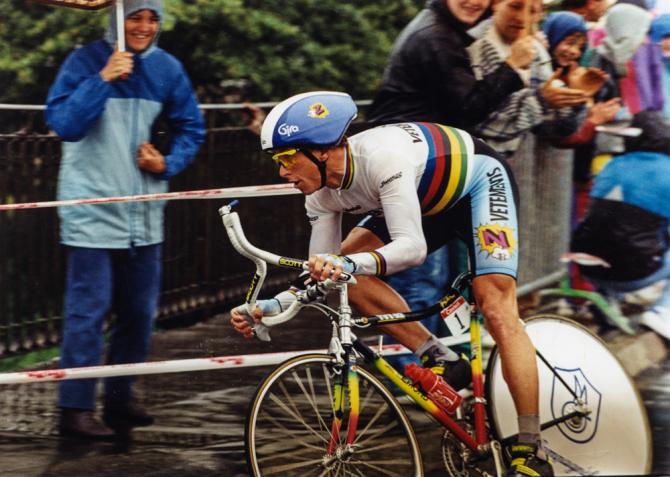
2005 world champion Tom Boonen's 2006 season
Back in the early 2000s, Tom Boonen simply was Peter Sagan. With rockstar swagger and good looks, European housewives swooned at every move the Belgian made.
Victories at the Tour of Flanders, Paris-Roubaix and Gent-Wevelgem, as well as Tour de France stage wins, had put his name on everyone's lips, and winning the 2005 Worlds road race in Madrid, Spain, was what everyone, bar perhaps second-placed Alejandro Valverde, had hoped for.
Now, clad in the white jersey with the rainbow bands, with, on occasion, matching white bib shorts, Boonen was the white knight who always did right, and his 2006 season as world champion was a charmed one.
In the spring, he won his second Tour of Flanders in a row, and finished second at Paris-Roubaix. He won the E3 Harelbeke, Scheldeprijs and four out of five stages, and the overall title, at the Tour of Qatar.
Boonen also wore the yellow jersey for four days at the Tour de France in 2006, as well as winning stages at the Tour of Belgium and the Eneco Tour.
Seemingly, he could do no wrong, with or without the rainbow jersey on his back, although that reputation was later sullied, if only a little, when he tested positive for cocaine – twice, in 2008 and 2009. But he wound his way back into fans', and particularly Belgians', hearts with further victories at Flanders and Roubaix in 2012, and retired at the age of 36 in 2017, with Paris-Roubaix as his final race as a pro.
2017 world champion Peter Sagan's 2018 season
Three times now, Slovakia's Peter Sagan has stood atop the World Championships podium, surveying his audience of deliriously happy fans, everyone content that the right man had won the day.
Sagan's had his fair share of frustrations over the years, when he's complained of being marked out of contention at a number of races, particularly on stages at the Tour de France. But since 2015, the Worlds road race has been his domain, and only a hilly course at the end of this month in Innsbruck, Austria, is likely to end his reign, although Sagan will still be there, doing his best to flatten the climbs.
His 2016 season – his first as world champion, having won at the end of the 2015 season in Richmond, in the USA – brought success with victory at the Tour of Flanders, at Gent-Wevelgem and the GP Cycliste de Québec, and stage wins at the Tour of California, the Tour de Suisse and the Tour de France. So, too, did the following season, when he won Kuurne-Brussels-Kuurne and more stage victories at both the Tour de Suisse and the Tour de France, and won in Quebec again.
But his 2018 season in the rainbow jersey has arguably topped the lot, with wins at Paris-Roubaix and Gent-Wevelgem, stages at the Tour Down Under and the Tour de Suisse, and three stage wins at the Tour de France, where he also won the green points jersey for a record-equalling sixth time.
Sagan will keep on winning next season, in his Slovakian national champion's jersey, if not a rainbow one, and the chances of him never winning the Worlds again are, to be honest, very slim.
If anyone's definitively disproved the theory that the rainbow jersey brings bad luck, it's the now 28-year-old Slovakian.
Rainbow curse be damned.